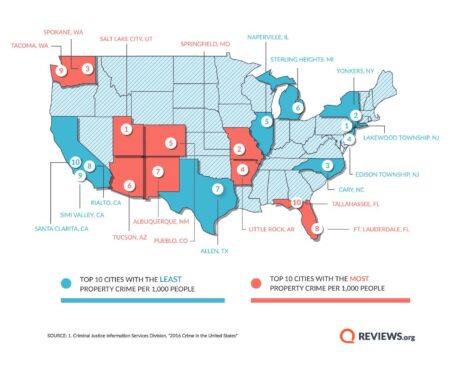CaliforniaŌĆÖs High-Speed Rail: Ambitions Confront Reality and Complexity
In 2012, California launched an unprecedented initiative to transform its transportation infrastructure by introducing the nationŌĆÖs first high-speed rail system. Initially celebrated as a visionary leap toward faster, greener travel connecting key urban centers, the project has since been plagued by a series of setbacks. What began as a $33 billion endeavor with a target completion in the early 2020s has ballooned into a multi-decade undertaking with costs now estimated to exceed $100 billion. This dramatic shift underscores a tangled mix of logistical hurdles, financial strain, and political discord that have slowed progress and raised doubts about the project’s feasibility.
Major contributors to the project’s difficulties include:
- Prolonged disputes over land acquisition delaying construction timelines.
- Unforeseen geological complexities complicating engineering efforts.
- Variable political backing affecting consistent funding streams.
- Operational inefficiencies and management challenges leading to resource wastage.
| Year | Original Completion Target | Estimated Budget | Project Status |
|---|---|---|---|
| 2012 | 2022 | $33 Billion | Initial Proposal |
| 2020 | 2033 | $80 Billion | Revised Forecast |
| 2023 | 2040+ | $100+ Billion | Current Projection |
Financial Constraints and Political Disputes Hamper Advancement
The projectŌĆÖs financial trajectory has been marked by escalating costs and inconsistent funding, which have repeatedly stalled construction efforts. Originally budgeted at $33 billion, the estimated expenses have surged to over $100 billion, forcing state officials to seek additional capital amid tightening fiscal conditions. Federal funding, once anticipated as a significant support, has faced delays and reductions, compelling local agencies to fill the gaps with limited resources. Attempts to attract private investment and issue bonds have been met with skepticism due to concerns over the project’s sustainability and return on investment.
Political divisions have further complicated progress, with stakeholders across California expressing conflicting priorities. Key areas of contention include:
- Route planning disputes: Urban areas advocate for direct, high-speed connections, while rural communities push for additional stops, increasing costs and complexity.
- Environmental impact debates: Opponents raise alarms about potential harm to sensitive ecosystems and question the effectiveness of proposed mitigation measures.
- Governance and oversight issues: Lawmakers argue over accountability frameworks amid allegations of mismanagement and lack of transparency.
| Fiscal Year | Budget Allocated (in Billions) | Percentage of Funds Disbursed |
|---|---|---|
| 2018 | $7.5 | 65% |
| 2019 | $8.0 | 50% |
| 2020 | $6.3 | 40% |
| 2021 | $5.0 | 30% |
Engineering Complexities and Environmental Constraints Reveal Project Vulnerabilities
From the outset, the California high-speed rail initiative has faced daunting technical challenges. The route traverses diverse and often difficult terrain, including earthquake-prone zones and unstable soil formations, necessitating advanced and costly engineering solutions. Integrating state-of-the-art rail technology while adhering to stringent safety and environmental standards has led to frequent design revisions and construction delays. Notable technical obstacles have included:
- Unexpected subsurface conditions extending construction schedules.
- Complex tunneling operations through mountainous landscapes.
- Integration difficulties between signaling systems and train control technologies.
- Rising costs of specialized materials and equipment.
Environmental regulations have also imposed significant constraints. The project intersects with protected wetlands, endangered species habitats, and critical water resources, triggering legal challenges and demanding comprehensive environmental assessments. These requirements have often resulted in prolonged pauses and costly modifications. The table below outlines key environmental challenges and their impact on project timelines:
| Environmental Concern | Effect on Project | Delay Duration (Months) |
|---|---|---|
| Wetland Conservation | Route realignments to avoid sensitive areas | 9 |
| Protection of Endangered Species | Mandatory habitat restoration and monitoring | 14 |
| Water Resource Safeguards | Installation of advanced filtration and runoff controls | 6 |
These intertwined technical and ecological challenges underscore the difficulty of balancing ambitious infrastructure development with environmental responsibility and engineering innovation.
Critical Strategic Overhauls Required to Revitalize the High-Speed Rail Initiative
Reviving CaliforniaŌĆÖs high-speed rail project demands comprehensive reforms in governance, financial management, and operational oversight. Centralizing decision-making authority within a dedicated leadership entity could reduce bureaucratic delays and improve accountability. Instituting regular, independent financial audits alongside transparent progress reporting would help curb cost overruns and rebuild public confidence. Moreover, adopting stringent procurement policies emphasizing competitive bidding and rigorous contractor supervision is vital to enhance efficiency and adherence to schedules.
On the funding front, diversifying revenue streams beyond reliance on state-issued bonds is crucial. Expanding access to federal infrastructure grants, exploring public-private partnerships, and innovative financing models could provide more stable and flexible capital. The table below compares current challenges with proposed solutions across key reform areas:
| Focus Area | Existing Issue | Recommended Action |
|---|---|---|
| Governance | Dispersed authority causing delays | Establish centralized command structure |
| Financial Oversight | Unchecked budget overruns | Implement routine independent audits |
| Contract Administration | Project delays and inefficiencies | Enforce competitive bidding and strict monitoring |
| Funding Strategy | Heavy dependence on state bonds | Broaden funding sources including federal and private |
Conclusion: Navigating the Future of CaliforniaŌĆÖs High-Speed Rail
As CaliforniaŌĆÖs high-speed rail project continues to face mounting delays, ballooning expenses, and political contention, its ultimate fate remains uncertain. The original vision of a fast, sustainable rail network linking the stateŌĆÖs major cities has been overshadowed by operational missteps and unforeseen challenges. This experience serves as a powerful lesson for large-scale infrastructure projects nationwide. Moving forward, decisive leadership, strategic reforms, and renewed stakeholder collaboration will be essential to determine whether this ambitious transportation dream can be realized or will remain a costly cautionary tale.




